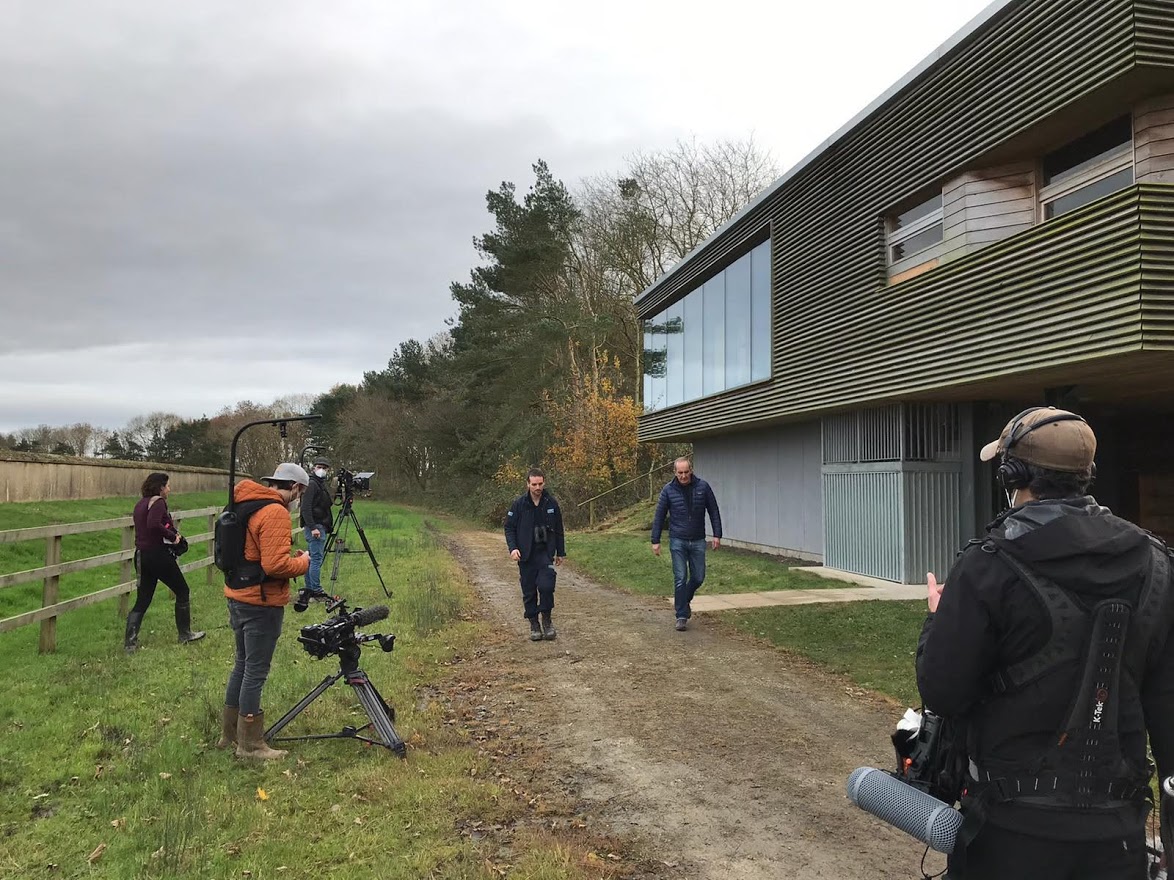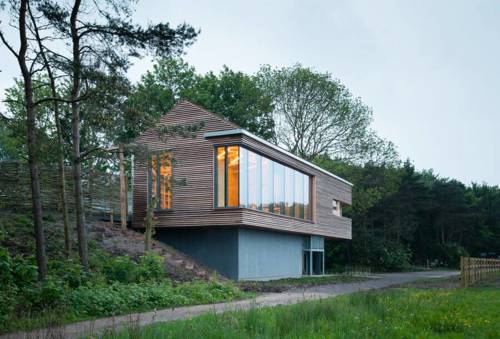Tophill Low’s bird-friendly architecture featured on Grand Designs

9/26/2024
Award-winning Tophill Low Nature Reserve, based in Driffield, East Yorkshire, has been featured on Grand Designs as an exemplar for its use of bird-friendly glass on its hide.
In collaboration with Yorkshire Water, Leeds based architects, Group Ginger, designed a new bird hide with safety elements at the forefront of the design, to protect the reserve’s diverse birdlife.
Channel 4’s Grand Design teams recognised the bird-friendly building design as a case study to compliment this season's episode (which aired Wednesday 25 September) on the conversion of the old coast guard station at Flamborough Head, a bird migration hot spot. So, Kevin and the team spent a day at Tophill Low finding out more.
Ornilux glass
The defining feature of the hide was the use of Ornilux bird protection glass throughout. Rather than using obstructive materials, the glass technology uses a UV patination, which is barely visible to the human eye, yet is highly contrasted to birds.
Due to the four types of photoreceptive cones in their eye’s retina, birds can perceive UV radiation, besides numerous other colours. The structure of the glass resembles a spider web and reflects the light for oncoming birds.

The hide
When rebuilding its nature reserve facilities in 2017, Yorkshire Water sought to build the new hide as close to the reservoirs as possible, to allow observation of the wildlife at the site of special scientific interest (SSSI), while maintaining an environmentally friendly look and feel to the structures.
The bird hide combines classroom facilities, a public viewing gallery with picture windows framing the expansive reservoir views, and a 24-hour hide for the dedicated twitchers hoping to catch a glimpse of migratory birds on their last stop in the country before departing to warmer climes.
As well as the bird-friendly glazing, the structure features no direct line of sight though the building with windows carefully baffled by internal fixtures. The lighting is cinema floor lighting, so the building does not illuminate or create the silhouette of a human figure.
The hide has received numerous accolades including the RIBA Yorkshire Building of the Year and RIBA Yorkshire Client of the Year, for nature reserve warden, Richard Hampshire’s, in-depth design work with Group Ginger.

Protecting birdlife
It is estimated by the British Trust for Ornithology that up to 33 million birds die in the UK each year from collisions with windows.
Tophill Low’s dynamic habitats are home to many unique species, with 275 different species being spotted at the reserve.
In the last year, Tophill Low members have spotted some of the rarest birds in the UK; the black throated thrush last winter and the North American blue winged teal this spring.
Richard Hampshire, nature reserve warden at Tophill Low, said: “It’s an excellent opportunity to showcase all the thinking that went into the build and hopefully draws attention to some of the potential remedies that modern architecture can present for birdlife.
“The scale of bird deaths by striking windows is rarely mentioned and warrants serious consideration for developers, regardless of the setting.”
A resounding success
Another great success of the hide is the role it has played in increasing access to nature, encouraging people to learn more about bird populations and habitat, and experience the health and wellbeing benefits of interacting with nature.
In 2023/24 the centre attracted:
- 27,166 visitors, nearly triple the number who visited before the hide opened (just over 10,000 visitors in 2015)
- 1324 free education visits for KS2 pupils
- 1204 attending guided events
